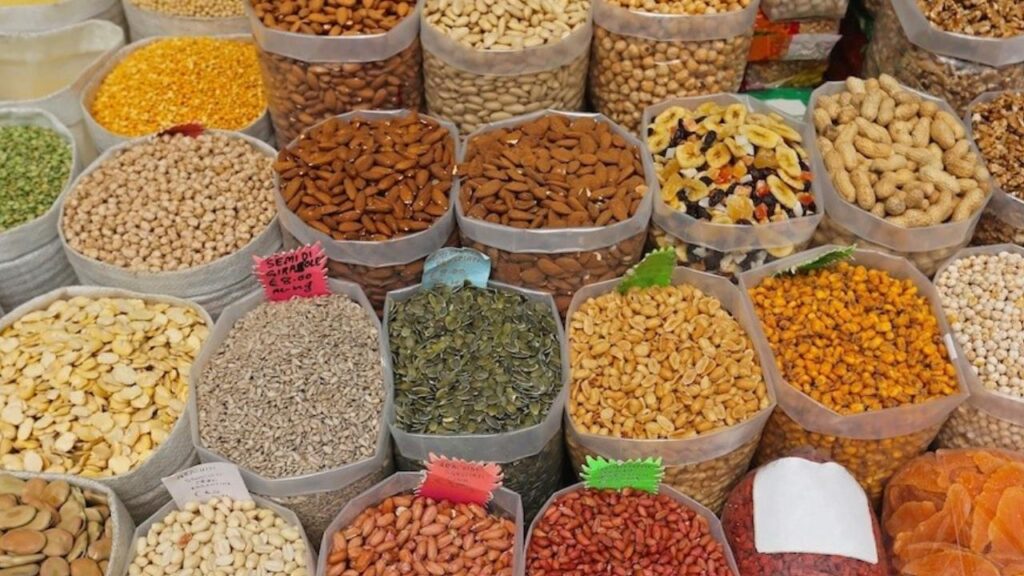Mrituenjay Jha stands as a seasoned Commodity Editor and Anchor at Zee TV, a powerhouse in India’s television news landscape. With an illustrious career spanning years in the media sphere, Mritunjaya has cemented his position as an esteemed authority in the domain of commodity news and analysis.
His mastery lies in dissecting intricate market trends and distilling them into digestible insights for a wide-ranging audience. Within Zee TV, Mrituenjay undertakes rigorous analyses of commodity markets across sectors, including agriculture, metals, and energy. His incisive reporting not only enlightens viewers on the economic landscape but also illuminates the impact of market shifts on individual livelihoods.
Mrituenjay’s journalistic odyssey demonstrates an unyielding commitment to accuracy and an unwavering passion for amplifying stories of significance. His adeptness in engaging with industry luminaries and unraveling the complexities of commodity trading positions him as an indispensable asset to the Zee TV news fraternity.
In an exclusive exchange with The Interview World, he generously shares his perceptive views on the commodity market.
Q: How do the leading commodity exchanges contribute to driving commodity trading in India?
A: Commodity trading in India holds a venerable legacy, predating its counterparts in many nations. Mumbai served as the inaugural site for the Derivative Exchange’s establishment in 2003, marking a significant milestone in the country’s financial landscape. By 2016, India boasted not only a plethora of regional exchanges but also six national commodity exchanges: the Multi Commodity Exchange (MCX), National Commodity and Derivatives Exchange (NCDEX), Indian Commodity Exchange (ICEX), National Multi Commodity Exchange (NMCE), ACE Derivatives Exchange (ACE), and Universal Commodity Exchange (UCX).
This proliferation underscored India’s burgeoning role in global commodity markets. Furthermore, in 2018, the National Stock Exchange (NSE) and the Bombay Stock Exchange (BSE) took a decisive leap by integrating commodity trading into their platforms. This expansion not only broadened market accessibility but also signified India’s unwavering commitment to fostering a robust and diversified financial ecosystem.
Q: How can one effectively trade commodities, considering various methods and strategies?
A: Primarily, the landscape of trading is characterized by four distinct methods: spot trading, forward contracts, futures contracts, and option contracts. Spot trading involves swift or immediate delivery, facilitating instantaneous transactions. Conversely, forward contracts entail a negotiation process between buyers and sellers, where they agree upon a price for a commodity to be delivered at a predetermined date and quantity, thus fostering a sense of reliability and commitment. Similarly, futures contracts operate under analogous conditions to forward contracts, but transactions are executed through designated futures exchanges, introducing an element of standardized protocol and regulation.
In the realm of option contracts, holders are bestowed with a unique privilege: the right to either buy or sell the specified quantity, albeit without the compulsion to do so. This affords them flexibility and strategic advantage, enabling them to capitalize on favorable market conditions while mitigating risks associated with potential price fluctuations. These diverse trading mechanisms also collectively form the backbone of modern financial markets, offering participants an array of tools to navigate and capitalize on dynamic economic landscapes.
Q: What was the total turnover of commodity futures traded on MCX?
A: In the fiscal year 2021-22, the commodity futures turnover on MCX witnessed a significant decline, plummeting by 15.8% to Rs. 67.54 lakh crore from the previous year’s Rs. 80.25 lakh crore. However, amidst this downturn, options trading experienced an extraordinary surge, skyrocketing by 746.4% to achieve a remarkable turnover of Rs. 20.28 lakh crore compared to Rs. 2.40 lakh crore in the preceding fiscal year.
Specifically, futures trading in bullion, energy, metals, and agriculture sectors recorded turnovers of Rs. 26.45 lakh crore, Rs. 24.02 lakh crore, Rs. 15.08 lakh crore, and Rs. 1.12 lakh crore, respectively, in FY 2021-22. This reflects a shift from the previous fiscal year’s turnovers of Rs. 44.84 lakh crore, Rs. 18.25 lakh crore, Rs. 15.66 lakh crore, and Rs. 1.01 lakh crore in the same sectors.
Conversely, options turnover in energy, bullion, and metals amounted to Rs. 17.69 lakh crore, Rs. 2.58 lakh crore, and Rs. 0.006 lakh crore, respectively, during FY 2021-22, marking a significant contrast to the previous year’s figures of Rs. 0.48 lakh crore, Rs. 1.92 lakh crore, and Rs. 0.0009 lakh crore.
Q: What advantages does the commodity market offer?
A: The commodity market offers numerous advantages, such as enhancing food security and attracting investment into the agricultural sector. Through futures markets, farmers can hedge against price fluctuations by selling futures contracts on their produce, ensuring a stable income and protecting against potential losses.
However, the current plight of Indian farmers underscores the challenges they face, particularly with weakened prices for pulses due to oversupply. One solution lies in leveraging futures contracts to secure prices that adequately compensate farmers for their produce.
Moreover, inadequate post-harvest infrastructure poses a significant obstacle in the agricultural sector. The lack of proper storage and transportation facilities results in substantial food grain losses during transit, adversely affecting both consumers and farmers alike. To address these challenges effectively, a functional commodity market ecosystem is essential. This ecosystem must benefit farmers, middlemen, brokers, and consumers alike, fostering increased investments in agricultural infrastructure, including efficient transport and warehousing facilities.



